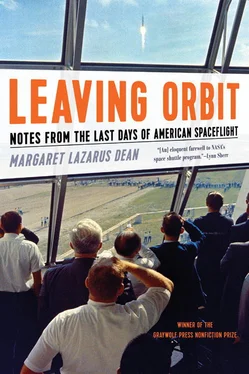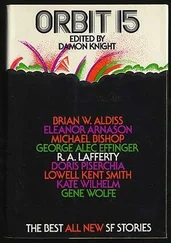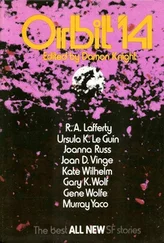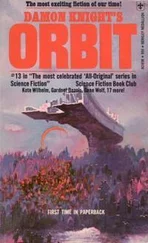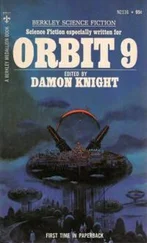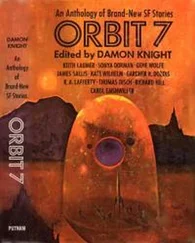Omar texts me back within hours, God bless him.
A very good read!
He corrects a technical error (diplomatically, of course)—I’ve misunderstood the meaning of the abort mode known as negative return. I’d written that negative return marks the point after which the shuttle could no longer safely return to Earth, when, in fact, Omar explains, negative return means only that the shuttle can’t return to the runway at the Kennedy Space Center. It can still land at one of the emergency landing sites elsewhere around the globe. Somehow, my error feels symbolic, maybe because the term itself is so poetic. It seems significant that I’d thought things were a little worse than they actually are.
* * *
Nearly six months later, I’m standing around with Omar in a roped-off VIP area in a large grassy field outside the Air and Space Museum’s Udvar-Hazy Center near Dulles Airport. This is a second site the Air and Space Museum added in 2003, a pair of hangars large enough to display more of the museum’s many airplanes, spacecraft, and other artifacts than can the smaller marble building on the National Mall that I still think of as being Air and Space.
The ceremony isn’t due to begin for over an hour, and while we talk, Omar and I watch the final stages of the setup. Folding chairs in the first two rows are marked with signs that read RESERVED FOR ASTRONAUTS, each one with a small American flag resting on it. The sound system is put through its final preparations; the opera singer who will perform the national anthem does a brief sound check, singing the song’s first line and then its highest notes, “and the rockets’ red glare…”
Omar is wearing a neon orange wristband that a few minutes ago I pried off my own wrist and slipped to him surreptitiously through a fence separating media and VIPs from the general public. I wasn’t even supposed to have press credentials myself, hadn’t thought to register for them, but last night at my hotel I ran into my space friends Anna and Doug, whom I met at the launch of Atlantis , and they let me tag along with them to the media registration table and allow myself to be mistaken for a journalist with the same publication. Once I had the orange wristband, it became clear to me what its value would be, that the spacious area directly in front of the dais was open only to accredited media and to VIPs designated by NASA—mostly astronauts, administrators, and museum officials. Omar and I had been texting each other all morning, and I was pleased with myself when I hit upon the plan to sneak him in, pleased that I could get him in somewhere he wouldn’t have been able to get into otherwise, as he has done for me so many times.
Discovery had left the Kennedy Space Center for the last time two days earlier. Omar was there working that day, watching and taking pictures as Discovery rolled out of the Vehicle Assembly Building on its way to the mate-demate device that would lift it atop the back of the shuttle carrier aircraft—I got to see his, and other space fans’, pictures of it all day on Twitter, Facebook, and Flickr. Yesterday I drove from Knoxville to Washington, and it felt odd to head north instead of south, to drive eight hours rather than twelve. I’d thought the drive would be easier, but I didn’t find it to be so—I didn’t know any of the landmarks, never knew where would be a safe place to stop, how much farther I had to go. It was oddly disorienting.
Enterprise has already been pulled out of its old spot in the museum and parked on a paved area behind the dais. It’s already wearing the tail cone that will help stabilize it on its trip to New York. Discovery is going to be pulled up in the other direction, and the two orbiters will be posed nose to nose for a few hours, a rare sight.
Enterprise was the first orbiter to be constructed, assembled without engines or tiles for early flight dynamics tests. It was flown atop the shuttle carrier aircraft repeatedly to test the safety of the mated configuration, then was dropped from a plane and landed manually by astronauts to test its gliding abilities. All this happened in 1977, when I was in kindergarten. The original plan had been for Enterprise to be fitted with engines and to become the second working orbiter, after Columbia , but a number of design changes were made as Columbia was being assembled, making it more practical to refit an existing test frame as a new orbiter and to retire Enterprise. The test frame became Challenger , and Enterprise went on a goodwill tour of the world before being sent to Air and Space. It was in storage from 1985 until 2003, when the Udvar-Hazy Center opened and there was finally enough room to display it. The one thing people seem to remember about Enterprise is that it was going to be named Constitution until a letter-writing campaign convinced President Gerald Ford to ask NASA to change the name to that of the spaceship from Star Trek. When Enterprise rolled out of the plant where it had been assembled in Palmdale, California, it was feted in a ceremony including some of the original show’s cast. It’s a distinct moment of midseventies culture: in the pictures from that day, Leonard Nimoy, George Takei, and NASA managers are all wearing leisure suits. I’ve never seen Enterprise in person, and I find it strange to look at. In size and proportion it’s identical to the other orbiters, as is its black nose. But the fuselage and payload bay doors are wrong, solid white without the familiar tiles that protect working space shuttles. And the whole thing is too clean, without the wear and tear that Discovery and the others have earned over dozens of space flights.
As we wait, Omar and I catch up on what’s been going on since we saw each other last. It doesn’t feel at all unusual to be standing with him in a grassy field with a lot of other people milling around waiting for something to begin, but it feels wrong not to be doing so in Florida. Omar always acts as a host, subtly, when we are together at the Cape, answering my questions, introducing me to people, making sure I get a clear view of whatever we are looking at. Here in DC he doesn’t know any more than I do, and I find that disorienting too.
“Thanks again for getting me in here,” Omar says, flashing his wristband.
“It’s the least I could do,” I answer. “It would be wrong if you couldn’t see the ceremony, after you’ve dedicated so much of your life to Discovery. ”
“Still,” Omar points out, “if they let in everyone who’s ever worked with Discovery , there wouldn’t be any room for anyone else.”
The ceremony gets started. Michael Curie from the NASA Communications Office directs our attention to a countdown being displayed on video screens. He tries to lead the crowd in counting down from ten, but it’s a little awkward, and most people don’t join in. I fold my arms and remain silent. There is something sacred about the poetry of countdown, and I feel it’s not to be evoked inappropriately. At six , the video creates the sound of main engine start, and when the countdown reaches zero the screens display footage of Discovery launching, that fire under the launchpad and the steam billowing up, the bright light as the spacecraft starts its climb against gravity. People applaud, but I scowl at the video screen. There is something awful about showing video of launch today when everyone here would rather be at a launch than at a museum dedication. I sneak a look at Omar, who looks skeptical but is clapping.
Then Michael Curie explains to us that as Discovery returned home from space, the twin sonic booms always announced its arrival, and that now we should listen for that telltale sound. The sound system then produces a recording of the sonic booms, such a faint facsimile of the real thing I feel a flare of anger. Most people here have never heard the shuttle’s sonic boom and never will, and to play them this weak recording and tell them it’s what the shuttle sounded like, I feel, is a disservice to all. I wonder whether Omar feels the same way, but he is watching the far end of the tarmac, the direction from which Discovery will approach us.
Читать дальше
